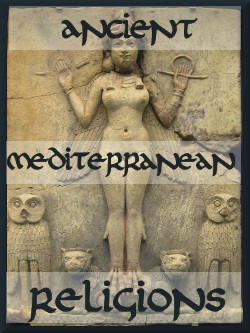Ancient Mediterranean Religions
General Description
Ancient Mediterranean Religions focuses on ancient forms of religious expression, from Mesopotamia to Rome, encompassing the geographic regions and time periods out of which Judaism and Christianity first emerged. Faculty pursue a variety of critical approaches, including text criticism, linguistic and literary analysis, philosophy, history, and archaeology, in order to examine diversity, interaction, and development in the religious cultures of the ancient Near East and Mediterranean.
Faculty work in the following subfields and, at the time of application, students are expected to select one of them as their primary specialization:
- Ancient Near East
- Hebrew Bible
- Early Judaism
- Archaeology
- Greco-Roman Religions
- Early Christianity (including New Testament)
- Religions of Late Antiquity
Coursework
It is expected that the bulk of a student’s classes will be in their subfield, with other course requirements being fulfilled in related areas in consultation with their advisor.
Languages
Students will be examined on two ancient languages, one (the primary research language) in a Doctoral Examination as specified in the following section and the other (the secondary language) prior to taking the Doctoral Examinations. It is expected that most students will acquire at least a third ancient language (e.g., Latin, Coptic, Aramaic, Syriac) in the course of their program.
A solid competency in both French and German is required of all doctoral students in this field prior to their Doctoral Examinations.
Doctoral Examinations
Doctoral candidates will normally be required to pass five written Doctoral Examinations subsequent to the completion of coursework. The examinations will typically cover the following areas:
- Language: A translation examination in the language of primary research (Greek, Hebrew, or Aramaic).
- Religions and cultures of the ancient Mediterranean: An examination focusing either on the religions of the ancient Near East (including the Hebrew scriptures) to Alexander or on the religions of the Greco-Roman world from Alexander to Constantine.
- History and literature of the primary field: An examination of the critical study and interpretation of selected texts in the student’s area of special focus, some in the original languages and some in translation, and of the historical developments in the period of specialization.
- Outside area: An examination in an area outside of the student’s specific area of research interest, whether within the field, within the Department, or within the University (e.g., a student focusing on early Judaism could choose, in consultation with the faculty advisor, to be examined in Hebrew scriptures, early Christianity, religion and culture, classics, etc.).
- Dissertation examination: An examination in the broad area of proposed dissertation research within the student’s subfield (e.g., Pentateuchal studies, Palestinian archaeology, New Testament textual criticism, Gnosticism, early Christian apocrypha, etc.).
The precise formats of these examinations and the relevant bibliographies to be mastered in preparation for them will be determined in consultations between the student and the faculty advisor. In most instances the examinations will cover the broad range of issues relevant to the topic, with at least one question focusing on a subtopic of particular interest to the student, on which greater knowledge and in-depth preparation will be expected.
A student who has successfully completed the five written examinations will be given a final oral examination based on issues raised in the written exams and on matters that pertain to the area of dissertation research.
Faculty
Core Faculty
Associated Faculty
Click here to return to the description of the Ph.D. program.

